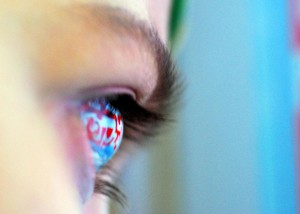Cognitive behavioral therapists teach that the way you think affects the way you feel and act and that the way you act ultimately affects how you feel in life.
Unfortunately, sometimes we get into a habit of unhealthy and inaccurate thought patterns which lead to negative emotions and negative behaviors like avoidance or aggression.
For example: A new co-worker walks by you in the hallway without acknowledging you.
You think...
- ‘She doesn’t like me…She doesn’t think I am worth saying hello to’
- You feel snubbed and angry and your self confidence is diminished
- The next time she walks down the hall you make a show of ignoring her first
- Your working and social relationship deteriorates
It’s a negative spiral of emotions and behaviors that all began with your interpretation of the situation – it all begins with your thinking habits and patterns.
Using CBT, you might learn how to retrain your mind so that you don’t leap to conclusions which result in negative consequences.
For example: That same co-worker walks by without saying hello...
You accept...
- that you are friendly and worthy of saying hello to and so you wonder what might be troubling her and causing her distraction – you feel some friendly concern for her
- You check on her later, mention her earlier distraction and ask her if everything is going OK. You ask her if there is anything you can do to help.
- She admits that she is lost on a new work assignment and accepts your help gratefully
- Your professional and person relationship with her is strengthened
Research shows that CBT is one of the most effective therapies for mild to moderate depression and for anxiety and the most effective treatment for moderate to severe depression. People with other conditions may also find CBT helpful. It is frequently used to treat:
- Depression
- Anxiety (panic, phobias, social anxiety and other types)
- Stress
- PTSD
- Bulimia
- OCD
- Bipolar
- Psychosis
- Others 1
What Is CCBT?
Computerized cognitive behavioral therapy (CCBT) is pretty much just what it sounds like – instead of learning with a therapist, an engaging computer program teaches cognitive behavioral techniques and encourages practice exercises of those techniques. The computer program acts as instructor and guide through the process of learning a new way of thinking.
There are two types of CCBT programs
- Guided, or therapist directed and monitored
- Unguided, or self help in nature
Guided - When participating in a guided CCBT program, you will still interact with your therapist via live sessions, phone calls or emails. Your therapist will guide your progress, but the computer program will take over the time consuming task of teaching you new CBT techniques and leading practice exercises.
Unguided - Unguided or self help based CCBT programs require no therapist’s participation, but though they can be completed without professional assistance, current evidence suggests that guided CCBT programs are likely more effective than self help based programs. One reason for this may be that people who are prescribed a CCBT program and supported by their therapist during the CCBT course are more likely than unguided CCBT users to complete the program.2
Typical CCBT programs consist of a guided lesson segment which is followed by homework or practice assignments and further informational resources.
How Well Does CCBT Work?
Surprisingly well, actually…
A 2011 meta analysis of 12 studies evaluating the use of CCBT to treat depression (as well as other conditions) found that:
- There is evidence that guided CCBT works as well as therapist provided CBT for the treatment of depression and anxiety
- Self-help CCBT programs help to reduce symptoms of depression and are quite effective in reducing symptoms of anxiety
- Evidence suggests that users of CCBT find it an acceptable alternative to therapist delivered CBT3
Advantages of CCBT
Some key advantages to the use and promotion of CCBT include:
- CCBT is available to people in rural or remote locations who may have difficulty otherwise accessing CBT therapy
- CCBT may be preferable to people who feel uncomfortable receiving
services in a clinician’s office
- Guided CCBT requires less therapist time and intervention. In areas where there is a shortage of CBT practitioners this may help to improve access to services
- References
Page last updated Feb 28, 2012


